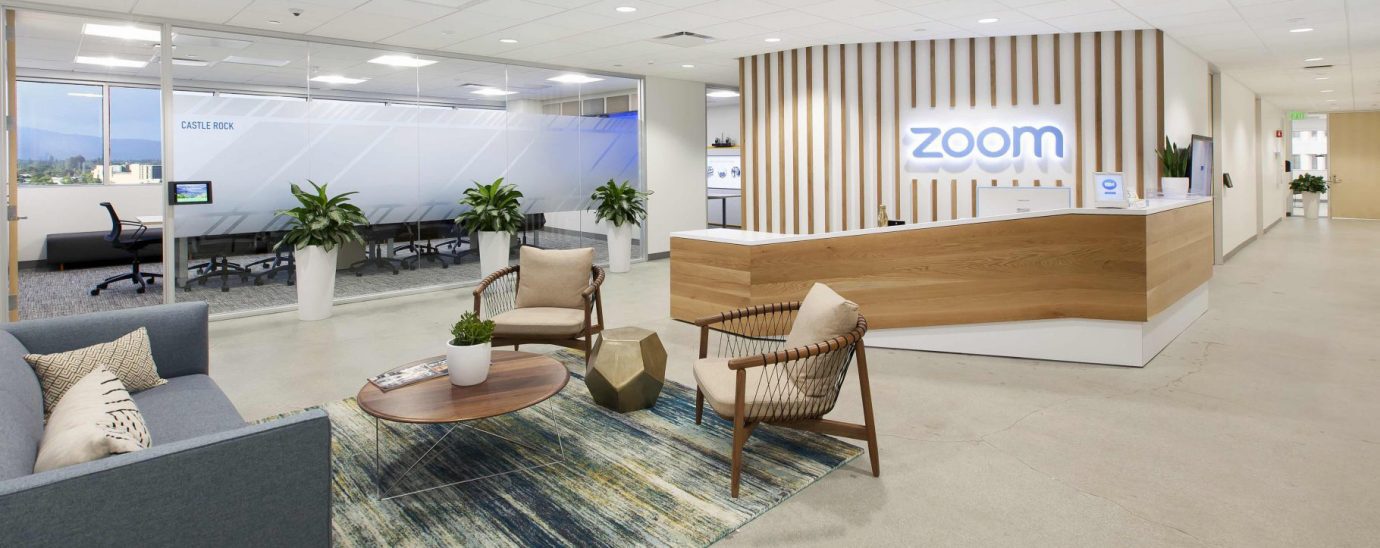Zoom plans for a hybrid return to the workplace

Zoom has announced that it is preparing for a hybrid approach to return to the workplace, strategically mixing remote and in-office work.
Zoom has today announced that it would be taking a hybrid approach as its employees return to the office. For employees to work both in the office and remotely, Zoom will use its platform and features like Zoom Rooms Smart Gallery to ensure that employees, wherever they are, are connected.
Considering employee wants
Zoom has engaged with its employees regularly on the impending return to the office by updating staff bi-weekly with meetings. Zoom has encouraged employees to share their honest feelings regarding remote and office work during these meetings. Zoom will prioritise flexibility following an internal poll that found that only 1% of the workforce wants to return to the office full-time. The poll found that over 50% desired the hybrid approach to work, while a quatre wanted to work from home full time. The remainder already work remotely on a full-time basis.
Zoom has shared that it does not plan to rush office reopenings, and will not open offices until the social distancing measures and health precautions required to prevent the spread of Covid-19 are no longer a requirement. This summer, the communications platform provider had opened its office in Sydney, Australia, but closed it as soon as threats of the virus rose in the area. In its blog update, Chief Financial Officer, Kelly Steckelberg, said: “We’re carefully listening and learning, but ultimately, our office reopenings will be one component of a flexible, hybrid approach.”

“There isn’t a one-size-fits-all approach to returning to the office, and we’re listening to our employees to understand their concerns and help guide our plans,” commented Kelly Steckelberg, Chief Financial Officer at Zoom.
“Any decision we make at Zoom ladders into one goal: maintaining a mutual sense of trust between leadership and employees, as higher trust leads to a happier, more productive workforce. We’re carefully listening and learning, but ultimately, our office reopenings will be one component of a flexible, hybrid approach.”
The divide over hybrid work
There has been a divide between many major technology companies regarding implementing hybrid work in the long term. Apple has remained hardline in its plans for employees to return to the office in September, causing outrage amongst employees. Last month, the CEO of Apple, Tim Cook, sent out an email to inform the staff that they would have to return to working in the office for a minimum of three days a week from September. This decision is a contrast to other major tech firms such as Twitter and Facebook, which have authorised their employees to work from wherever, “forever.” In its blog, Zoom sought to make one thing clear: That any decision made at the company would seek to maintain a mutual sense of trust between leadership and employees, “as higher trust leads to a happier, more productive workforce.”
READ MORE:
- Zoom elevates platform experience with launch of Zoom Apps and Zoom Events
- Asana launches app for Zoom to reimagine meetings
- Doom and Zoom: The future of working from home
- Zoom’s new gender-inclusive feature
About Zoom
Our frictionless communications platform is the only one that started with video as its foundation, and we have set the standard for innovation ever since. That is why we are an intuitive, scalable, and secure choice for individuals, small businesses, and large enterprises alike. Founded in 2011, Zoom is publicly traded and headquartered in San Jose, California.
For more news from Top Business Tech, don’t forget to subscribe to our daily bulletin!